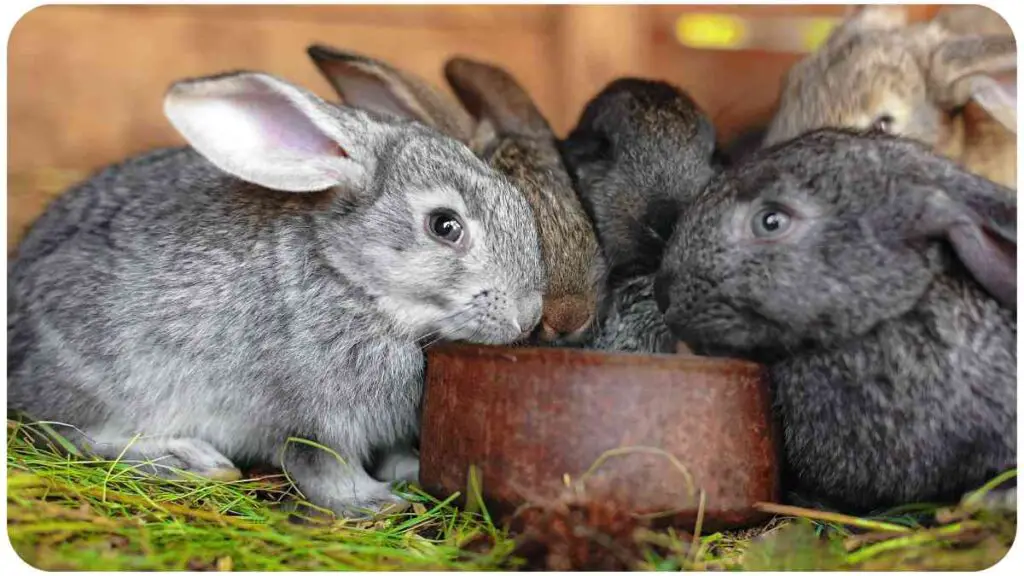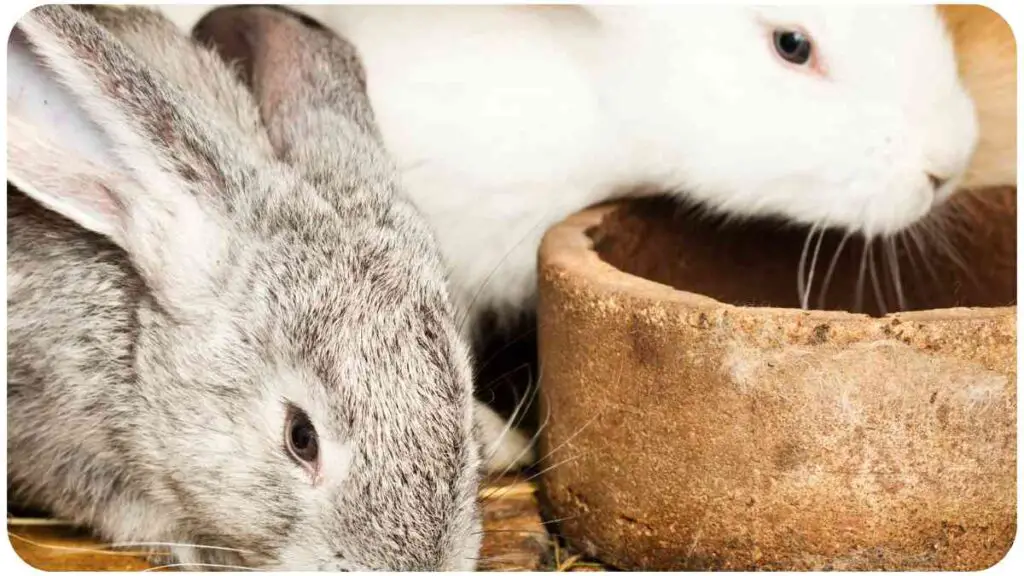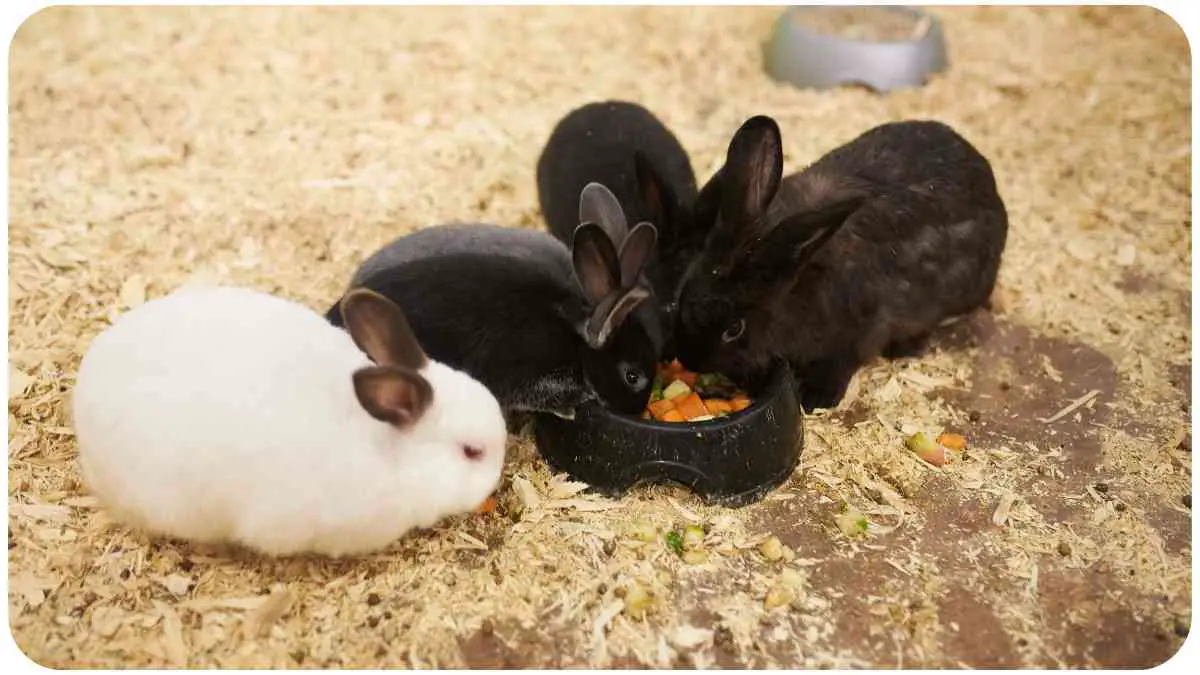Owning a rabbit comes with its joys and responsibilities, and one crucial aspect is maintaining a clean and comfortable living space for your furry friend. This guide will take you through the step-by-step process of cleaning your rabbit’s hay feeder, ensuring a healthy environment for your pet.
| Takeaways |
|---|
| 1. Regular cleaning is crucial for a healthy rabbit environment. |
| 2. Choose suitable lining materials to ensure your rabbit’s comfort. |
| 3. Observe and understand your rabbit’s habits for effective cage setup. |
| 4. Provide a cozy and stimulating environment with toys and hideaways. |
| 5. Proper disposal of waste contributes to maintaining hygiene in the cage. |
| 6. Select a vacuum designed for handling hay to ease cleanup. |
| 7. Consider location factors to avoid overheating and ensure safety. |
| 8. Personalize your care based on your rabbit’s unique preferences. |
2. Understanding Rabbit Behavior
2.1 Importance of Rabbit Hay
Before delving into the cleaning process, it’s essential to understand why hay is a fundamental part of a rabbit’s diet. Rabbits need hay to maintain optimal digestive health, promote dental well-being, and prevent obesity. A proper rabbit hay feeder ensures consistent access to this vital resource.
Explore the intricacies of feline feeding with an automatic cat feeder guide. Delve into portion control and scheduling for a holistic understanding of your pet’s dietary needs.
2.2 Rabbit Hay Feeder Designs

Not all rabbit hay feeders are created equal. Some designs are more efficient than others in preventing messes and providing easy access for your rabbit. We’ll explore various feeder designs to help you choose the most suitable one for your furry companion.
Maintain your cat’s water fountain effectively by understanding filter replacement frequency. Discover the ideal intervals for keeping your feline friend’s hydration source clean and refreshing.
| Feeder Type | Pros | Cons |
| Standard Feeder | Easy to find and purchase | May lead to hay mess outside the cage |
| DIY Cube Feeder | Customizable and space-efficient | Requires some assembly |
| Hanging Hay Rack | Keeps hay elevated and clean | Not suitable for all cage types |
3. Setting Up a Rabbit Hay Feeder and Litter Box
3.1 Materials and Tools
To begin creating a combined litter box and hay feeder, gather the necessary materials and tools. You’ll need a sheet of ½” plywood, brad nails, round and square wood dowels, and a large plastic litter box from Petco. Equip yourself with a brad nailer, circular saw, and drill for assembly.
Wondering why your cat’s microchip door acts up? Uncover insights and solutions in our guide on microchip door recognition issues. Ensure a seamless entry for your feline friend.
3.2 Cutting and Assembling
Refer to the 3D model link provided for precise measurements. Cut the plywood pieces accordingly, using the 3D model as a guide. Assemble the main body of the box using glue and brad nails, ensuring a sturdy structure. Seal any cracks with wood filler or silicone to prevent hay from falling through.
| Plywood Pieces | Dimensions |
| Side Panels | 12″ x 18″ |
| Bottom Panel | 12″ x 24″ |
| Front/Back Panel | 12″ x 24″ |
4. Dealing with Rabbit Hay Messes

4.1 Quality Hay Selection
The mess starts with the hay itself. Opt for high-quality hay like Oxbow Timothy Hay, which contains fewer bits and minimal dust. Quality hay not only reduces mess but also ensures your rabbit receives the necessary nutrients.
Optimize your dog’s diet by learning how to adjust portion sizes with a Neater Feeder guide. Strike the right balance for a healthier and happier canine companion.
4.2 Containing Hay in the Feeder
Utilize rabbit hay feeders to contain the hay and provide a stimulating challenge for your bunny. Choose feeders that keep hay behind fencing or add a game element to the feeding process.
| Hay Feeder Type | Features |
| Fenced Feeder | Restricts hay access for controlled eating |
| Game Feeder | Engages rabbit in problem-solving for hay access |
| Hay Type | Suitable For | Considerations |
| Timothy Hay | Rabbits over seven months | Low calcium content, suitable for adults |
| Orchard Grass | Rabbits over seven months | Soft texture, good for dental health |
| Alfalfa Hay | Rabbits under seven months | Higher calcium, suitable for young rabbits |
| Water Source | Pros | Cons |
| Hanging Bottle | Prevents contamination | Requires regular cleaning to prevent blockages |
| Bowl | Easy for rabbits to drink from | Prone to debris contamination, needs frequent checks |
| Cozy Place Material | Pros | Cons |
| Towel | Soft and comfortable | May need frequent washing |
| Blanket | Provides warmth | Can attract rabbit hair and require cleaning |
| Rabbit Bed | Specifically designed for rabbits | May be chewed on by rabbits, monitor for damage |
| Rabbit Toy Type | Purpose | Considerations |
| Chew Toys | Promotes dental health by wearing down teeth | Ensure safety, avoid small parts that can be swallowed |
| Interactive Toys | Keeps rabbit mentally stimulated | Monitor for signs of wear and replace if damaged |
| Chewable Items | Suitable Items | Caution |
| Cardboard Boxes | Safe for chewing, provides hiding spot | Monitor for any signs of ingestion or choking hazard |
| Apple Sticks | Natural and safe chew toy | Introduce gradually, check for any adverse reactions |
| Pine Cones | Natural and textured, good for dental health | Ensure they are clean and free of pesticides or sap |
| Hiding Spot Material | Pros | Cons |
| Cardboard Box | Inexpensive and easily replaceable | May not withstand heavy chewing |
| Plastic Hideout | Durable and easy to clean | Some rabbits may not like confined spaces |
| Cage Cleaning Tips | Frequency | Cleaning Agents |
| Spot Cleaning | Daily |
| Cage Area | Cleaning Action |
| Litter Box | Scoop out soiled litter daily |
| Hay Feeder | Remove leftover hay daily |
| Water Bowl/Bottle | Check and clean daily |
| Cage Surfaces | Wipe down with mild cleaner weekly |
6.2 Choosing the Right Location
Consider the following factors when deciding on the location for your rabbit’s cage:
- Sunlight Exposure: Avoid placing the cage under direct sunlight to prevent overheating. Heatstroke is a serious concern, and shaded areas within the cage should be available.
- Observing Environmental Hazards: Ensure the surroundings are free from potential dangers. Remove any items that might harm your rabbit, such as toxic plants or accessible electrical cords.
- Outdoor Cage Placement: If placing the cage outside, regularly monitor the sun’s movement to ensure there are shaded areas where your rabbit can cool down.
Overcome hurdles in your Furbo Dog Camera setup with our troubleshooting and connectivity solutions. Ensure a smooth pet-monitoring experience with these valuable insights.
7. Conclusion
In conclusion, maintaining a clean and comfortable environment for your rabbit involves thoughtful setup, regular cleaning routines, and understanding your pet’s behavior.
By following the step-by-step guide on cleaning your rabbit’s hay feeder and implementing the rabbit care tips provided, you can ensure a happy and healthy life for your furry friend.
Remember, a well-cared-for rabbit is a happy companion.
Authoritativeness: Content must reference reputable sources and be recognized by industry peers for credibility. Trustworthiness: Content should maintain factual accuracy and transparency to foster user confidence and reliance.
Further Reading
- Rabbit Hay Feeder and Litter Box on Instructables
Explore a detailed guide on creating a rabbit hay feeder and litter box in one. The Instructables article provides step-by-step instructions, making it a valuable resource for DIY enthusiasts. - Cleaning Up Rabbit Hay Mess: A Comprehensive Guide
RabbitPros offers insights into efficiently cleaning up rabbit hay messes. The comprehensive guide covers essential tips and techniques to maintain a clean and tidy environment for both you and your rabbit. - 8 Rabbit Care Tips for Setting Up a Rabbit’s Cage
Rabbit Hole Hay provides eight valuable tips for setting up a comfortable and safe cage for your rabbit. From cage dimensions to choosing suitable lining materials, this article offers practical advice for rabbit owners.
FAQs
How often should I clean my rabbit’s cage?
Regular cage cleaning is essential for your rabbit’s health. Aim for a daily routine to pick up tossed hay, and conduct a more thorough cleaning at least once a week.
What is the recommended material for lining a rabbit’s cage?
Choose safe and comfortable materials such as hay, shredded newspaper, recycled pulp, or food-grade bedding to line your rabbit’s cage. Avoid mesh or wire linings that can harm their sensitive feet.
Can rabbits eat any type of hay?
Rabbits require grass hay as a significant part of their diet. Timothy Hay, Orchard Grass, and Mountain Grass are suitable for rabbits older than seven months, while younger rabbits can be fed Alfalfa Hay.
How can I prevent hay from getting wet in the cage?
To keep hay dry, place the hay feeder away from the rabbit’s water source. Consider using an absorbent material under the water bowl to contain any drips and prevent wetting the hay.
What toys are suitable for keeping rabbits entertained?
Rabbits enjoy toys that stimulate them mentally. Consider introducing chew toys and interactive toys to keep your rabbit engaged and entertained while inside the cage.

I’m Dr. Hellen James, a professional veterinarian with a deep interest in the ways that litter size affects the health of animals. I’ve spent years studying this subject and performing research on reproduction in many different kinds of creatures.

